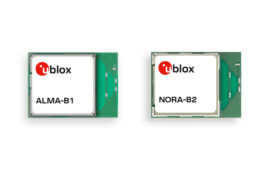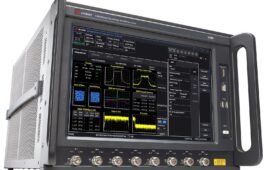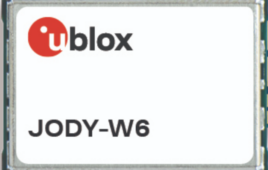The Innophase INP1012 and INP1013 modules run on little power, saving battery time in IoT devices.
Batteries can never last long enough. That’s a good thing because it pushes engineers to find new ways to reduce energy consumption in battery powered wireless devices. That’s where the INP1012 and INP1013 Wi-Fi (802.11 b/g/n)/Bluetooth (BLE 5.0) Talaria TWO modules from Innophase can help.
The modules draw 31 mA (Rx Mode @ 1 Mb/sec 802.11b), 178 mA (Tx Mode @ 1 Mb/sec 802.11b +17.5dBm) while operating. A power save mode drops current draw to 57 µA while a deep sleep cuts current draw to 11 µA to 19 µA, depending on how much of the module’s 512 kB SRAM remains powered.
 In addition to adding wireless connectivity, the modules include an Arm Cortex-M3, 80 MHz microcontroller for those times when you must process data on module and can’t wait for the cloud to perform the computations. The modules also provide a 10-bit successive approximation register (SAR) A/D converter with an internal fixed 1.0 V reference voltage.
In addition to adding wireless connectivity, the modules include an Arm Cortex-M3, 80 MHz microcontroller for those times when you must process data on module and can’t wait for the cloud to perform the computations. The modules also provide a 10-bit successive approximation register (SAR) A/D converter with an internal fixed 1.0 V reference voltage.
Functionally, the modules differ only in their antenna support. The INP1012 has solder pads for an external antenna while the INP1013 includes a ceramic chip antenna. Both modules have 30 functional pads with the INP1012 adding two pads for the external antenna.
Both modules feature 12 programmable I/O pins that add GPIO, PWM, PDM, SPI, UART, JTAG, I2C, and I2S functions.
Applications include smart door locks, remote security cameras, connected sensors, or other space-constrained products.





Tell Us What You Think!